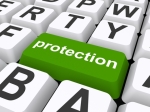 Recently we published an article on patent and copyright trolls and the recent legislative changes and legal decisions which have had a favorable impact on advertisers and their agency partners.
Recently we published an article on patent and copyright trolls and the recent legislative changes and legal decisions which have had a favorable impact on advertisers and their agency partners.
We received a tremendous amount of feedback from our readers on the topic, along with the question; “What specifically can we do to protect ourselves from copy and or patent infringement trolls?” Given the level of interest regarding this subject, we wanted to share our thoughts on measures which advertisers can take to assist in mitigating the risks emanating from law suits brought by non-practicing entities.
By way of background, Advertising Audit & Risk Management (AARM) works exclusively with advertisers in the area of advertising agency contract compliance and performance auditing. As part of the contract review portion of the audit, we provide counsel on opportunities for advertisers to enhance contract language to incorporate the latest in terms of legal and financial safeguards to protect their interests. Needless to say, intellectual property infringement protection has been a growing area of concern for our clientele and one of the items on which we provide guidance.
The challenge as it relates to copyright and patent trolls or non-producing, patent enforcing entities is multi-faceted. On the surface, the answer to this dilemma is pretty straightforward:
- Carry Intellectual Property Infringement Insurance.
- Ask your agency to conduct “Clearance Searches” to identify where digital work could pose infringement risks.
- Require your agencies (particularly digital/ mobile agencies) to carry the same or similar insurance (i.e. patent defense insurance policy)… be sure to provide guidance on terms:
- Is the vendor required to indemnify? Indemnify and defend?
- What is being indemnified? (damages, attorney fees, injunctions, lost business)
- Specify your desired role, exposure limits in a defense should action be brought.
- Require your agencies to indemnify you.
In reality however, the aforementioned actions can be expensive (i.e. a “clearance search” can cost $25,000 to $50,000), are not necessarily foolproof and represent serious client-agency contract/ relationship challenges when it comes to the issue of indemnification.
As an example, the American Association of Advertising Agencies (4A’s) recommends that; “Agencies make clear in their client agreements that clients assume all risks associated with patent infringement.” On the flip side of the ledger, some advertisers, particularly larger organizations, force their agencies to contractually indemnify them… whether the agency has the financial means to do so or not.
This raises the question; “How can we break the logjam when it comes to indemnification protection?” Clearly the answer to this question includes open, constructive dialog between both parties and their legal counsel. After all, both advertiser and agency have a shared interest in minimizing the risks associated with frivolous, expensive lawsuits brought by trolls.
For client-side procurement professionals, the most logical approach to resolving this issue with the organization’s agency partners lies in negotiating a middle-ground based upon the notion of “mutuality” or a “proportional and equitable” sharing of risks and costs. Experience would suggest that negotiations over this matter are more protracted and time consuming than other aspects of a client-agency agreement. This is understandable given the risks to both parties and the cost and complexity of the potential remedies.
As long as advertisers negotiate from a position of strength and fairness, they can bridge the gap with their agency partners and reach agreement on this important legal construct.
